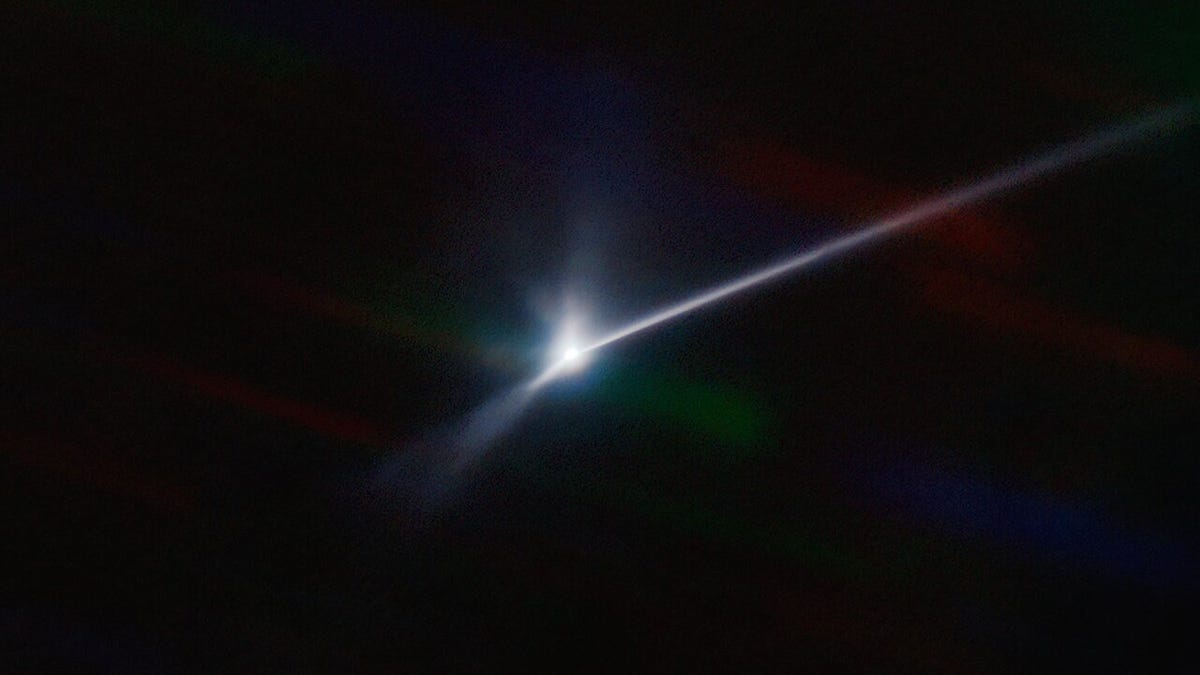Asteroid Smacked by NASA's DART Now Has Giant Comet-Like Debris Tail
The debris of a cosmic crash is literally stretching across the sky.

The aftermath of DART's Collision with Dimorphos is the 10,000-kilometer (6,214 mile) trail of dust captured here by the SOAR Telescope.
Instantly after NASA crashed its Double Asteroid Redirection Test spacecraft into the asteroid Dimorphos last week, telescopes watching in space and on Earth spotted a plume of dust and debris astronomers refer to as ejecta.
Now, follow-up observations show the dust is being pushed away from the asteroid by the solar wind, creating a tail that's similar to those we're accustomed to seeing trailing comets.
DART, an experiment in planetary protection, aimed to see if essentially throwing a robot probe at an object from Earth could impact the path of that object's orbit. Such an intentional maneuver could one day help humanity avoid an unpleasant encounter with an asteroid or comet that poses a serious impact threat to our planet.
Fortunately, Dimorphos poses no such threat (and in fact no known near-Earth objects are currently considered to be a significant danger). But there are plenty of asteroids and other space rocks out there that we haven't yet discovered or started tracking, so the data gained from DART could literally come in handy at just about any moment.
The collision took place on Monday, Sept. 26, and within less than two days, a well-defined tail was easily visible from ground-based telescopes.
Our last post was Monday's observations of the debris from the #DART impact on Didymos. Courtesy of @WesternU's Rob Weryk, this gif is last night's observations with MegaCam. Rob and Richard Wainscoat from @UHIfA plan continued observations of the asteroid. pic.twitter.com/2JwWaIaAWd
— CFHT (@CFHTelescope) September 28, 2022
On Sept. 28, astronomers Teddy Kareta from Arizona's Lowell Observatory and Matthew Knight of the US Naval Academy used the Southern Astrophysical Research (SOAR) Telescope in Chile to observe Dimorphos. They were able to calculate that its new tail is at least 10,000 kilometers (6,000 miles) long.
"It is amazing how clearly we were able to capture the structure and extent of the aftermath in the days following the impact," Kareta said in a statement.
The observations and more conducted by numerous other astronomers will begin to paint a more detailed picture of the DART impact in coming weeks, including how much material the asteroid ejected and how much of it is made up of larger chunks versus fine dust.
The hope is all this will also better inform any future efforts to divert more threatening space rocks that attempt to call on Earth without an invitation.

